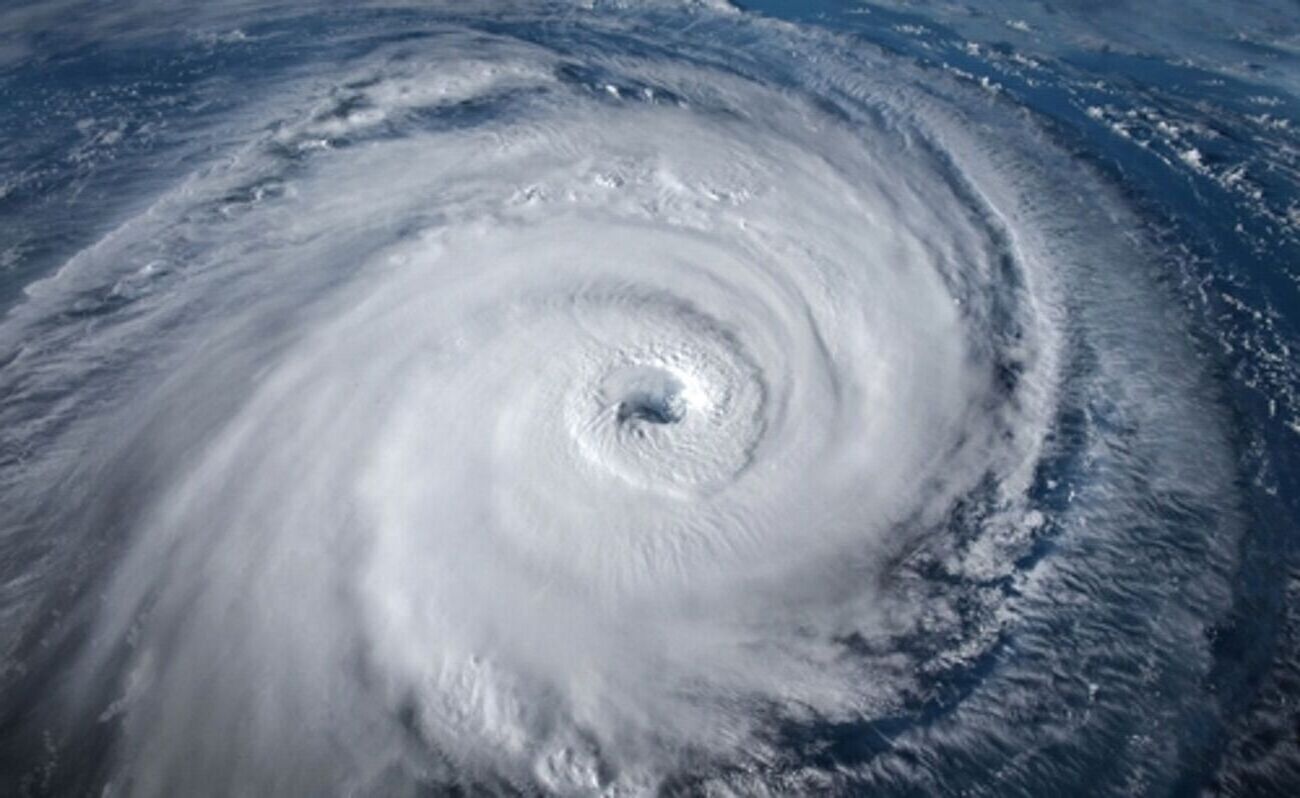
Hurricanes are among nature's most powerful and destructive forces. Understanding hurricane categories is essential for predicting their impact and preparing for their arrival. These storms are classified using the Saffir-Simpson Hurricane Wind Scale, which ranges from Category 1 to Category 5. Each category signifies increasing wind speeds and potential damage. For instance, a Category 1 hurricane has winds between 74 and 95 mph, causing minimal damage, while a Category 5 hurricane boasts winds of 157 mph or higher, leading to catastrophic destruction. Knowing these categories helps communities brace for the storm's fury, ensuring safety and minimizing damage.
Key Takeaways:
- Hurricane categories range from 1 to 5, with each level indicating the potential for damage. Understanding these categories helps in preparing for the impact of a hurricane.
- The Saffir-Simpson Hurricane Wind Scale categorizes hurricanes based on wind speed and potential damage. It's important to know the differences between each category to prepare for a hurricane's arrival.
Understanding Hurricanes
Hurricanes are powerful tropical cyclones that can cause immense damage. Knowing the different categories helps in predicting their impact and preparing for their arrival. Here are 40 key facts about hurricane categories.
-
Definition of a Hurricane
A hurricane is a type of tropical cyclone forming over warm ocean waters in the Atlantic, Pacific, and Indian Oceans. It features strong winds and heavy rainfall. -
Formation of a Hurricane
Hurricanes form when warm ocean waters heat the air above, causing it to rise and create a low-pressure area. This process fuels the storm, leading to its intensification.
Hurricane Classification
Hurricanes are classified based on their wind speed and potential damage. The Saffir-Simpson Hurricane Wind Scale categorizes hurricanes from Category 1 to Category 5.
-
Category 1: Minimal Damage
Category 1 hurricanes have winds between 74 and 95 mph. They can cause some damage to trees and power lines, with power outages lasting a few days. -
Category 2: Moderate Damage
Category 2 hurricanes have winds between 96 and 110 mph. They can cause extensive damage to buildings and trees, leading to power outages that could last up to a few weeks. -
Category 3: Significant Damage
Category 3 hurricanes have winds between 111 and 129 mph. They can cause devastating damage to buildings, with electricity and water outages lasting several weeks. -
Category 4: Catastrophic Damage
Category 4 hurricanes have winds between 130 and 156 mph. They can cause catastrophic damage to well-built framed homes, with roofs and walls partially or completely collapsed. -
Category 5: Extreme Damage
Category 5 hurricanes have winds of 157 mph or higher. They can cause catastrophic damage to all types of buildings, with most areas becoming uninhabitable for weeks or months.
Key Features of Hurricanes
Understanding the key features of hurricanes helps in predicting their behavior and impact.
-
Storm Surge
A storm surge is a flood of ocean water pushed inland by the hurricane. It can cause significant damage to coastal areas and is often the deadliest part of a hurricane. -
Eye of the Hurricane
The eye is a relatively calm and clear area at the storm's center. It is surrounded by the eyewall, the most destructive part of the storm. -
Eyewall
The eyewall is a band of clouds, intense wind, and rain surrounding the eye. It is where the most violent winds and heaviest rains occur. -
Feeder Bands
Feeder bands are areas of heavy rain and gusty winds fed by the warm ocean. They become more pronounced as the storm intensifies. -
Outflow
Outflow refers to high-level clouds moving outward from the hurricane. These clouds indicate the storm's overall strength and can predict its trajectory and intensity.
Factors Influencing Hurricane Formation
Several factors contribute to the formation and intensification of hurricanes.
-
Warm Waters
Hurricanes need warm ocean water and moist air to form. This is why they always form over the ocean, particularly in tropical regions near the equator. -
Hurricane Speed
Hurricanes can travel at speeds of up to 20 miles per hour. This rapid movement means they can make landfall quickly after developing over the ocean. -
Tropical Storm vs. Hurricane
The difference between a tropical storm and a hurricane is wind speed. Tropical storms have winds of 36 to 47 mph, while hurricanes have winds of at least 74 mph.
Naming and History of Hurricanes
Naming hurricanes helps in avoiding confusion and streamlining communication.
-
Naming Hurricanes
Meteorologists name hurricanes to avoid confusion. The World Meteorological Organization (WMO) uses a strict system of naming tropical storms and hurricanes. -
Retired Hurricane Names
Names of particularly destructive hurricanes are retired to avoid confusion and respect the storm's impact. Examples include Katrina, Andrew, Mitch, and Sandy. -
Atlantic Hurricane Season
The Atlantic hurricane season runs from June 1 to November 30. However, storms can form outside this period. -
Pacific Hurricane Season
In the Pacific, the hurricane season starts on May 15 and ends on November 30. This earlier start is due to the warmer ocean waters in the Pacific. -
Deadliest U.S. Hurricane
The deadliest U.S. hurricane on record was a Category 4 storm that hit Galveston, Texas, on September 8, 1900, resulting in over 8,000 deaths. -
Most Active Hurricane Season
The most active hurricane season on record was 2005, with 28 named storms identified by the National Hurricane Center. -
Least Active Hurricane Season
The least active hurricane season in the Atlantic occurred in 1983, with only four tropical storms forming. -
Cape Verde-Type Hurricanes
Cape Verde-type hurricanes develop into tropical storms near the Cape Verde Islands and then become hurricanes before reaching the Caribbean.
Preparing for Hurricanes
Preparation is key to minimizing damage and ensuring safety during a hurricane.
-
Preparing for a Hurricane
Preparing for a hurricane involves staying informed, signing up for emergency alerts, boarding up windows, and having a disaster preparedness plan. -
Impact on Buildings
The impact of a hurricane on buildings depends on its category. Category 1 hurricanes cause minimal damage, while Category 5 hurricanes can destroy well-built framed homes. -
Impact on Trees
Trees are often affected by hurricanes, especially in higher categories. Category 3 and above can snap or uproot trees, blocking roads and causing further damage. -
Impact on Power Lines
Power lines are vulnerable to hurricane winds, especially in higher categories. Category 2 and above can cause extensive damage to power lines, leading to extended power outages. -
Impact on Water Supply
The water supply can be affected by a hurricane, especially in higher categories. Category 4 and above can cause significant damage to water treatment plants and distribution systems. -
Storm Surge Impact
The storm surge is often the deadliest part of a hurricane. It can cause significant flooding in coastal areas, leading to loss of life and property.
Hurricane Categories and Their Impact
Each hurricane category has a different potential for damage. Understanding these differences helps in preparing for the storm.
-
Hurricane Categories and Damage
The Saffir-Simpson Hurricane Wind Scale estimates potential property damage based on wind speed. However, it does not account for rainfall, flooding, and storm surges. -
Hurricane Categories and Wind Speed
Wind speed is the primary factor in determining the category of a hurricane. The higher the wind speed, the higher the category and the more destructive the storm. -
Hurricane Categories and Potential Damage
Each category of hurricane has a different potential for damage. Category 1 hurricanes cause minimal damage, while Category 5 hurricanes cause catastrophic damage. -
Hurricane Categories and Storm Surge
The storm surge is a critical factor in determining the impact of a hurricane. Higher categories of hurricanes typically produce higher storm surges. -
Hurricane Categories and Eyewall
The eyewall is the most destructive part of a hurricane. It is where the most violent winds and heaviest rains occur. -
Hurricane Categories and Feeder Bands
Feeder bands are areas of heavy rain and gusty winds that feed into the eyewall. They become more pronounced as the storm intensifies. -
Hurricane Categories and Outflow
Outflow refers to high-level clouds moving outward from the hurricane. These clouds indicate the storm's overall strength and can predict its trajectory and intensity.
Final Thoughts on Hurricane Preparation
Knowing the hurricane category and its potential impact is crucial for preparation.
-
Hurricane Categories and Preparation
Preparing for a hurricane involves understanding its category and potential impact. Each category requires different preparations, from boarding up windows to evacuating the area. -
Hurricane Categories and Naming System
The naming system for hurricanes helps in avoiding confusion. The WMO uses a strict system of naming tropical storms and hurricanes. -
Hurricane Categories and Retired Names
Names of particularly destructive hurricanes are retired to avoid confusion and respect the storm's impact. Examples include Katrina, Andrew, Mitch, and Sandy. -
Understanding Hurricane Categories
Understanding the categories of hurricanes is essential for predicting their impact and preparing for their arrival. Each category has a different potential for damage, from minimal to catastrophic.
Understanding Hurricane Categories Matters
Knowing hurricane categories helps us prepare better for these powerful storms. Each category, from Category 1 to Category 5, tells us how strong the winds are and what kind of damage to expect. Category 1 means minimal damage, while Category 5 can be catastrophic. Storm surges, eyewalls, and feeder bands add to the chaos, making it crucial to stay informed. The Saffir-Simpson Hurricane Wind Scale is our guide, but don't forget about the impact of rainfall and flooding. Naming hurricanes helps avoid confusion, and retiring names honors the storm's impact. Preparing for a hurricane means understanding its category and potential damage. From boarding up windows to having a disaster plan, every step counts. Stay safe, stay informed, and respect the power of hurricanes.
Frequently Asked Questions
Was this page helpful?
Our commitment to delivering trustworthy and engaging content is at the heart of what we do. Each fact on our site is contributed by real users like you, bringing a wealth of diverse insights and information. To ensure the highest standards of accuracy and reliability, our dedicated editors meticulously review each submission. This process guarantees that the facts we share are not only fascinating but also credible. Trust in our commitment to quality and authenticity as you explore and learn with us.


